Operation Blue Star
(→A) |
|||
| (9 intermediate revisions by one user not shown) | |||
| Line 11: | Line 11: | ||
[[Category:history |B ]] | [[Category:history |B ]] | ||
| − | = | + | =In brief= |
| − | + | ==A== | |
| + | [http://indiatoday.intoday.in/story/10+political+disgraces/1/23078.html ''India Today''], Gunjeet K. Sra | ||
| − | + | [http://indiatoday.intoday.in/story/10%20biggest%20national%20security%20failures/0/23067.html ''India Today''] | |
| + | |||
| + | ''' Operation Bluestar, June 1984: ''' It was a political disaster and an unprecedented act in Indian history. Its aftermath and the increased tensions led to assaults on the Sikh community in India. | ||
| + | |||
| + | '' TEMPLE TRIBULATION '' | ||
| + | |||
| + | Apparently led by completely off-the-mark intelligence reports, the Indian Army stormed the Golden Temple complex at Amritsar in Operation Bluestar of June 4-6,1984, killing 492 civilians and 83 armymen.“And now, pushed to the wall,Mrs Gandhi finally did what few could deny had to be done: she gave the signal for Operation Bluestar,”said India Today in June 1984. | ||
| + | |||
| + | ==B: A more detailed account== | ||
| + | [https://indianexpress.com/article/explained/explained-history/operation-bluestar-history-explained-8648026/ Arjun Sengupta, June 6, 2023: ''The Indian Express''] | ||
| + | |||
| + | ''' The history ''' | ||
| + | |||
| + | The idea of Khalistan was born in the aftermath of the Partition of India into West Pakistan (now Pakistan) and East Pakistan (now Bangladesh). Punjab, the home of most members of the Sikh community, was also divided into two because of the newly-created border. It led to a sense of loss among Indian Sikhs, with culturally and religiously important cities, such as Lahore and Nankana Sahib, going to Pakistan. | ||
| + | |||
| + | As writer Khushwant Singh put it in the collection of essays The Punjab Story, “The sentiment (for a separate Sikh state) was expressed in a single query – Hindus got Hindustan. Muslims got Pakistan. What did the Sikhs get out of Partition and Independence?” | ||
| + | |||
| + | Additionally, there was some discontent over a few administrative issues, like river water sharing with other states, which led to demands for autonomy – and then for a sovereign Sikh state from some quarters. It is also believed that Pakistan aided the movement with arms and funds. | ||
| + | |||
| + | The late KPS Gill, the DGP of Punjab Police who is credited with bringing the Punjab militancy under control, later wrote: “Ugly as the Atwal murder was, however, it was only a beginning… This became a regular feature; bodies, mutilated, hacked to pieces, stuffed into gunny bags, kept appearing mysteriously in the gutters and sewers around the Temple.” | ||
| + | |||
| + | By 1984, the government finally decided to step in by sending in armed forces to flush out Bhindranwale and his followers from their hideout inside the Golden Temple. | ||
| + | |||
| + | ''' The operation ''' | ||
| + | |||
| + | |||
| + | |||
| + | The Golden Temple complex was nothing short of a fortress. Over a period of months, Bhindranwale’s men had smuggled in a huge cache of arms and ammunition inside the complex and placed guns strategically for defence. Furthermore, under the leadership of Major General Shahbeg Singh, who had been dismissed by the Indian Army over corruption charges, Bhindranwale’s men received extensive military training. | ||
| + | |||
| + | On June 1, four days before the army actually entered the Golden Temple complex, the first shots were fired at the temple by the CRPF to, according to reports, “assess the training and strength of the militants inside”. | ||
| + | |||
| + | On June 3, a 36-hour-curfew was imposed on the state of Punjab with all methods of communication and public travel suspended, electricity lines cut and complete media censorship. | ||
| + | |||
| + | The army finally commenced the operation on the night of June 5. The initial thrust of the operation was to neutralise the high-perched defensive positions built by Bhindranwale’s men in the Golden Temple complex. As per the army, any assault on the temple compound could not be successful if they remained in play. | ||
| + | |||
| + | As the outer defences of the temple complex fell, the army was still hopeful for a quick capitulation. What they did not take into account was that the militants were not necessarily making “rational” decisions. The troops’ entry into the Golden Temple was met with furious fire from inside. | ||
| + | |||
| + | In The Punjab Story, journalist Shekhar Gupta described the troops’ attempts to capture the Parikrama or the circumambulatory path around the Golden Temple: “The troops made a mad rush for the staircase at each end of the Parikrama. But Shabeg had not earned his reputation of a wily, doughty commander in the army for nothing. He had anticipated just this and the sprinting troops ran headlong into automatic fire from men who sprang out of the manholes, strategically situated at the foot of each staircase.” | ||
| + | |||
| + | The unanticipated resistance faced by the troops resulted in the commanders calling for tank support. According to Giani Puran Singh, a temple priest, tanks began entering the temple complex at around 10 pm on June 5. | ||
| + | |||
| + | Over the next 12 hours, the army’s Vijayanta tanks shelled the Golden Temple’s Akal Takht – one of the five seats of power as per Sikh belief. This was Bhindranwale’s location, where resistance was the strongest. Tanks had been initially avoided over possible structural damage to the complex – something that would anger the Sikh community further. | ||
| + | |||
| + | However, once tanks were brought in, they proved to be extremely effective. As dawn broke on June 6, the main defences, comprising machine guns and Chinese-made RPGs, had largely been neutralised. At around 11 am, some 25 militants rushed out of the building, firing at random and running straight towards troops, who gunned down most of them. “The generals guessed that the mad dash was an indication that Bhindranwale was either dead or wounded or had, confirming their worst fears, escaped,” wrote Shekhar Gupta. | ||
| + | |||
| + | Fortunately for the armed forces, the firebrand preacher had not escaped. As the troops finally entered the Akal Takht, now in ruins, they found Bhindranwale dead, reportedly in a heap of “about 40 corpses”. The last remaining militants either surrendered or were killed by June 10. | ||
| + | |||
| + | ''' The aftermath ''' | ||
| + | |||
| + | While the army initially placed total casualties at 554 militants and civilians dead, 83 troops dead (4 officers, 79 soldiers) and 236 wounded among government forces, other estimates peg the number of casualties as much higher. | ||
| + | |||
| + | Though the army has always claimed it did everything to protect civilians, including making announcements on loudspeakers prior to the attack, its actions have been questioned. In 2017, a sessions court in Amritsar ruled that there was no evidence of such warnings. | ||
| + | |||
| + | Beyond the casualties, there were reverberations across the country. The resentment among some members of the Sikh community over the operation saw its gravest manifestation on October 31, 1984, when Prime Minister Indira Gandhi was assassinated by her two Sikh bodyguards, who blamed her for the attack. | ||
| + | |||
| + | Her assassination would trigger some of the worst communal violence ever witnessed in India, as Sikhs were openly targeted and killed. Many in the government and the Congress party, which was in power at the time, were accused of playing an active role in the anti-Sikh riots, such as Congress leader Sajjan Kumar. He was sentenced to life imprisonment by the Delhi High Court in 2018 for the murder of five persons in Delhi. | ||
| + | |||
| + | Crucially, while Bhindranwale had been killed, his death made him an almost mythological figure in some ways. “The Bhindranwale myth may, by the look of things, prove to be more powerful than the man,” journalist Tavleen Singh wrote in The Punjab Story. The events at Golden Temple did not end violence in Punjab, with rising militancy accompanying rising repression from the state and the armed forces well into the 1990s. | ||
| + | |||
| + | Crucially, while Bhindranwale had been killed, his death made him an almost mythological figure in some ways. “The Bhindranwale myth may, by the look of things, prove to be more powerful than the man,” journalist Tavleen Singh wrote in The Punjab Story. The events at Golden Temple did not end violence in Punjab, with rising militancy accompanying rising repression from the state and the armed forces well into the 1990s. | ||
| + | |||
| + | KPS Gill, former DGP of Punjab, wrote in The Punjab Story: “In hindsight, Operation Bluestar was possibly the single most significant act of political overreaction and military incompetence that gave a lease of life to a movement that could easily have been ended in the mid-1980s.” | ||
| + | |||
| + | [[Category:History|B OPERATION BLUE STAR | ||
| + | OPERATION BLUE STAR]] | ||
| + | [[Category:India|B OPERATION BLUE STAR | ||
| + | OPERATION BLUE STAR]] | ||
| − | |||
=5 lesser-known facts= | =5 lesser-known facts= | ||
[[File: golden temple operation blue star.jpg|Several people were killed in retaliation to Operation Bluestar. (Credit: Getty Images); Graphic courtesy: [http://timesofindia.indiatimes.com/india/Operation-Blue-Star-5-lesser-known-facts/articleshow/47574602.cms ''The Times of India''] | [[File: golden temple operation blue star.jpg|Several people were killed in retaliation to Operation Bluestar. (Credit: Getty Images); Graphic courtesy: [http://timesofindia.indiatimes.com/india/Operation-Blue-Star-5-lesser-known-facts/articleshow/47574602.cms ''The Times of India''] | ||
| Line 49: | Line 115: | ||
5. More often than not, the success or failure of Operation Blue Star is compared to Operation Black Thunder. The latter was the name given to two operations that took place in the late 1980s to flush out the remaining militants from the Golden Temple. | 5. More often than not, the success or failure of Operation Blue Star is compared to Operation Black Thunder. The latter was the name given to two operations that took place in the late 1980s to flush out the remaining militants from the Golden Temple. | ||
| + | |||
| + | =`Akali offer could have averted Op Bluestar'= | ||
| + | [http://epaperbeta.timesofindia.com/Article.aspx?eid=31808&articlexml=Akali-offer-couldve-averted-Op-Bluestar-20092015008039 ''The Times of India''], September 20, 2015 | ||
| + | |||
| + | ''' `Akali offer could've averted Op Bluestar' ''' | ||
| + | |||
| + | Rajeswar has also claimed that Operation Bluestar could have been averted had then PM Indira Gandhi agreed to a deal proposed by a “senior Akali Dal functionary“ in 1982. The ex-IB chief, who did not name the leader, said the Akalis had suggested that Gandhi ask the then Punjab CM Darbara Singh to step down and install a coalition government led by an Akali CM in his place, thus effectively neutralizing Jarnail Singh Bhindranwale. “I prepared a four-page note, outlining the offer and gave it to the PM. I told her the offer seemed sincere. I also asked her not to discuss the offer with Gianiji (Zail Singh) and take an independent decision,“ Rajeswar says. However, he adds that Gandhi turned down the offer and the situation in Punjab became only more explosive, leading to Operation Bluestar in which 492 civilians were killed, according to official estimates. | ||
| + | =The sources of this article include= | ||
| + | Times of India | ||
| + | |||
| + | 1. [http://timesofindia.indiatimes.com/india/Operation-Blue-Star-5-lesser-known-facts/articleshow/47574602.cms ''The Times of India'']: Jun 7, 2015 | ||
| + | |||
| + | 2. [http://epaperbeta.timesofindia.com//Article.aspx?eid=31808&articlexml=NEWSICLE-OPERATION-BLUESTAR-07062015011002 ''The Times of India''] | ||
| + | =See also= | ||
| + | [[Khalistan, Khalistani violence]] | ||
| + | |||
| + | [[Operation Blue Star]] | ||
| + | |||
| + | [[1984 riots: India]] | ||
| + | |||
| + | [[Category:History|B | ||
| + | OPERATION BLUE STAR]] | ||
| + | [[Category:India|B | ||
| + | OPERATION BLUE STAR]] | ||
Latest revision as of 10:52, 7 July 2023

This is a collection of articles archived for the excellence of their content. |
Contents |
[edit] In brief
[edit] A
India Today, Gunjeet K. Sra
Operation Bluestar, June 1984: It was a political disaster and an unprecedented act in Indian history. Its aftermath and the increased tensions led to assaults on the Sikh community in India.
TEMPLE TRIBULATION
Apparently led by completely off-the-mark intelligence reports, the Indian Army stormed the Golden Temple complex at Amritsar in Operation Bluestar of June 4-6,1984, killing 492 civilians and 83 armymen.“And now, pushed to the wall,Mrs Gandhi finally did what few could deny had to be done: she gave the signal for Operation Bluestar,”said India Today in June 1984.
[edit] B: A more detailed account
Arjun Sengupta, June 6, 2023: The Indian Express
The history
The idea of Khalistan was born in the aftermath of the Partition of India into West Pakistan (now Pakistan) and East Pakistan (now Bangladesh). Punjab, the home of most members of the Sikh community, was also divided into two because of the newly-created border. It led to a sense of loss among Indian Sikhs, with culturally and religiously important cities, such as Lahore and Nankana Sahib, going to Pakistan.
As writer Khushwant Singh put it in the collection of essays The Punjab Story, “The sentiment (for a separate Sikh state) was expressed in a single query – Hindus got Hindustan. Muslims got Pakistan. What did the Sikhs get out of Partition and Independence?”
Additionally, there was some discontent over a few administrative issues, like river water sharing with other states, which led to demands for autonomy – and then for a sovereign Sikh state from some quarters. It is also believed that Pakistan aided the movement with arms and funds.
The late KPS Gill, the DGP of Punjab Police who is credited with bringing the Punjab militancy under control, later wrote: “Ugly as the Atwal murder was, however, it was only a beginning… This became a regular feature; bodies, mutilated, hacked to pieces, stuffed into gunny bags, kept appearing mysteriously in the gutters and sewers around the Temple.”
By 1984, the government finally decided to step in by sending in armed forces to flush out Bhindranwale and his followers from their hideout inside the Golden Temple.
The operation
The Golden Temple complex was nothing short of a fortress. Over a period of months, Bhindranwale’s men had smuggled in a huge cache of arms and ammunition inside the complex and placed guns strategically for defence. Furthermore, under the leadership of Major General Shahbeg Singh, who had been dismissed by the Indian Army over corruption charges, Bhindranwale’s men received extensive military training.
On June 1, four days before the army actually entered the Golden Temple complex, the first shots were fired at the temple by the CRPF to, according to reports, “assess the training and strength of the militants inside”.
On June 3, a 36-hour-curfew was imposed on the state of Punjab with all methods of communication and public travel suspended, electricity lines cut and complete media censorship.
The army finally commenced the operation on the night of June 5. The initial thrust of the operation was to neutralise the high-perched defensive positions built by Bhindranwale’s men in the Golden Temple complex. As per the army, any assault on the temple compound could not be successful if they remained in play.
As the outer defences of the temple complex fell, the army was still hopeful for a quick capitulation. What they did not take into account was that the militants were not necessarily making “rational” decisions. The troops’ entry into the Golden Temple was met with furious fire from inside.
In The Punjab Story, journalist Shekhar Gupta described the troops’ attempts to capture the Parikrama or the circumambulatory path around the Golden Temple: “The troops made a mad rush for the staircase at each end of the Parikrama. But Shabeg had not earned his reputation of a wily, doughty commander in the army for nothing. He had anticipated just this and the sprinting troops ran headlong into automatic fire from men who sprang out of the manholes, strategically situated at the foot of each staircase.”
The unanticipated resistance faced by the troops resulted in the commanders calling for tank support. According to Giani Puran Singh, a temple priest, tanks began entering the temple complex at around 10 pm on June 5.
Over the next 12 hours, the army’s Vijayanta tanks shelled the Golden Temple’s Akal Takht – one of the five seats of power as per Sikh belief. This was Bhindranwale’s location, where resistance was the strongest. Tanks had been initially avoided over possible structural damage to the complex – something that would anger the Sikh community further.
However, once tanks were brought in, they proved to be extremely effective. As dawn broke on June 6, the main defences, comprising machine guns and Chinese-made RPGs, had largely been neutralised. At around 11 am, some 25 militants rushed out of the building, firing at random and running straight towards troops, who gunned down most of them. “The generals guessed that the mad dash was an indication that Bhindranwale was either dead or wounded or had, confirming their worst fears, escaped,” wrote Shekhar Gupta.
Fortunately for the armed forces, the firebrand preacher had not escaped. As the troops finally entered the Akal Takht, now in ruins, they found Bhindranwale dead, reportedly in a heap of “about 40 corpses”. The last remaining militants either surrendered or were killed by June 10.
The aftermath
While the army initially placed total casualties at 554 militants and civilians dead, 83 troops dead (4 officers, 79 soldiers) and 236 wounded among government forces, other estimates peg the number of casualties as much higher.
Though the army has always claimed it did everything to protect civilians, including making announcements on loudspeakers prior to the attack, its actions have been questioned. In 2017, a sessions court in Amritsar ruled that there was no evidence of such warnings.
Beyond the casualties, there were reverberations across the country. The resentment among some members of the Sikh community over the operation saw its gravest manifestation on October 31, 1984, when Prime Minister Indira Gandhi was assassinated by her two Sikh bodyguards, who blamed her for the attack.
Her assassination would trigger some of the worst communal violence ever witnessed in India, as Sikhs were openly targeted and killed. Many in the government and the Congress party, which was in power at the time, were accused of playing an active role in the anti-Sikh riots, such as Congress leader Sajjan Kumar. He was sentenced to life imprisonment by the Delhi High Court in 2018 for the murder of five persons in Delhi.
Crucially, while Bhindranwale had been killed, his death made him an almost mythological figure in some ways. “The Bhindranwale myth may, by the look of things, prove to be more powerful than the man,” journalist Tavleen Singh wrote in The Punjab Story. The events at Golden Temple did not end violence in Punjab, with rising militancy accompanying rising repression from the state and the armed forces well into the 1990s.
Crucially, while Bhindranwale had been killed, his death made him an almost mythological figure in some ways. “The Bhindranwale myth may, by the look of things, prove to be more powerful than the man,” journalist Tavleen Singh wrote in The Punjab Story. The events at Golden Temple did not end violence in Punjab, with rising militancy accompanying rising repression from the state and the armed forces well into the 1990s.
KPS Gill, former DGP of Punjab, wrote in The Punjab Story: “In hindsight, Operation Bluestar was possibly the single most significant act of political overreaction and military incompetence that gave a lease of life to a movement that could easily have been ended in the mid-1980s.”
[edit] 5 lesser-known facts
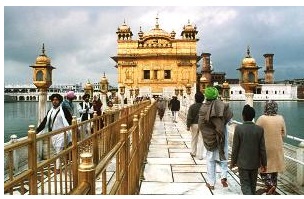
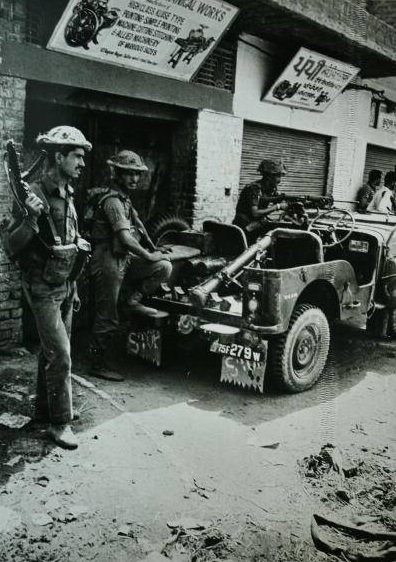
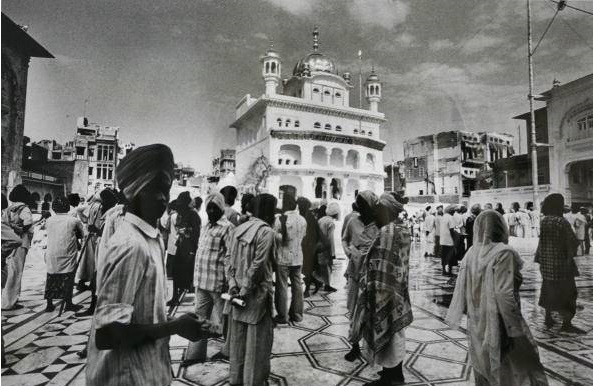
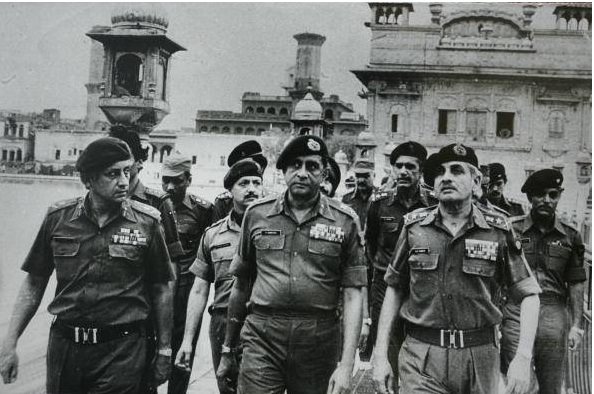
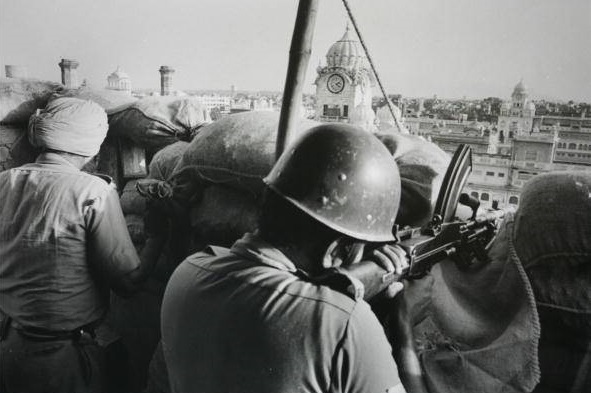
Army gained effective control over Harmandir Sahib or Golden Temple complex on June 7, 1984, with Operation Bluestar, after Khalistani militant Jarnail Singh Bhindranwale fell to bullets on June 6. Five lesser-known facts related to Operation Bluestar:
Army gained effective control over Harmandir Sahib or Golden Temple complex on June 7, 1984, with Operation Blue Star, after Khalistani militant Jarnail Singh Bhindranwale fell to bullets on June 6.
Here are five lesser-known facts related to Operation Blue Star:
1. Operation Blue Star had two components. The first was Operation Metal, which was confined to the Golden Temple complex.
Operation Metal was followed by Operation Shop, wherein security forces raided Punjab's countryside in order to capture suspects.
The second component was Operation Woodrose, launched throughout Punjab to quell militancy.
2. Several people were killed in retaliation to Operation Blue Star. PM Indira Gandhi was assassinated by her two Sikh bodyguards.
General AS Vaidya, the 13th Army chief, who supervised the operation, was shot dead in Pune after his retirement.
AI Flight 182, Kanishka, from Montreal to Delhi was bombed, killing all 329 on board.
3. GOC SK Sinha, who was asked by then PM Indira Gandhi to plan the attack at the Golden Temple, had reservations over the proposal.
He sought premature retirement in 1983 on being superseded by Lt Gen AS Vaidya for the post of Army chief.
4. Bhindranwale's tactical adviser was Maj Gen Shahbeg Singh, noted for his service in training of Mukti Bahini volunteers during the Bangladesh Liberation War. Singh was killed in the operation.
5. More often than not, the success or failure of Operation Blue Star is compared to Operation Black Thunder. The latter was the name given to two operations that took place in the late 1980s to flush out the remaining militants from the Golden Temple.
[edit] `Akali offer could have averted Op Bluestar'
The Times of India, September 20, 2015
`Akali offer could've averted Op Bluestar'
Rajeswar has also claimed that Operation Bluestar could have been averted had then PM Indira Gandhi agreed to a deal proposed by a “senior Akali Dal functionary“ in 1982. The ex-IB chief, who did not name the leader, said the Akalis had suggested that Gandhi ask the then Punjab CM Darbara Singh to step down and install a coalition government led by an Akali CM in his place, thus effectively neutralizing Jarnail Singh Bhindranwale. “I prepared a four-page note, outlining the offer and gave it to the PM. I told her the offer seemed sincere. I also asked her not to discuss the offer with Gianiji (Zail Singh) and take an independent decision,“ Rajeswar says. However, he adds that Gandhi turned down the offer and the situation in Punjab became only more explosive, leading to Operation Bluestar in which 492 civilians were killed, according to official estimates.
[edit] The sources of this article include
Times of India
1. The Times of India: Jun 7, 2015
[edit] See also
Khalistan, Khalistani violence
Operation Blue Star